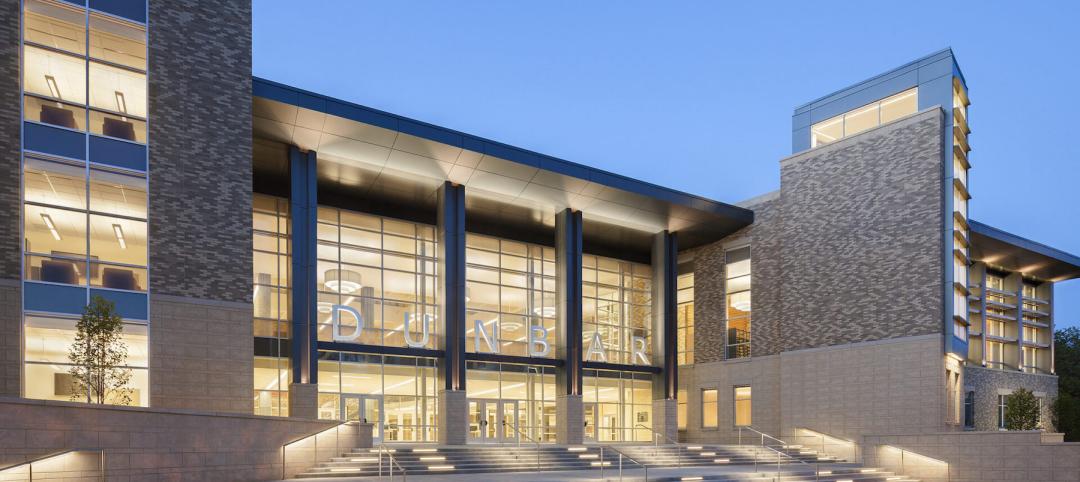“Would you move into your own senior living community?” It was a simple but pointed question that Perkins Eastman’s senior living experts posed to a group of 10 senior-housing CEOs during a think tank the firm hosted in Washington, D.C., last spring. For the most part, their answer was “No.”
“How do you create a community that isn’t just ‘senior living,’ that doesn’t even feel like senior living, but it’s this really exciting community that people want to live in because it reflects who they are?” asks Senior Associate Merintha Pinson, who helped lead the think tank. She and Principal Dan Cinelli summarized its findings along with three of those CEOs during the annual LeadingAge conference in Chicago last November.
Cinelli says that most traditional life-plan communities attract seniors over 80. But since younger Baby Boomers have been retiring in droves—there are nearly three times as many of them as their Silent Generation predecessors—these new consumers are saying, “If it looks, tastes, or feels like my father’s retirement community, I’m not coming,” Cinelli says.
Developers—especially in the for-profit sector—“have determined that people don’t want to live in a gated community 30 miles out of town. They want to live in town, where there are all these amenities and services that are easily accessible,” says Gary Steiner, Co-managing Principal of Perkins Eastman’s studio in Washington, D.C., where he leads its senior living team.
That realization is past due. “For a long time, those of us in senior living knew there was a portion of us who wanted to stay nearby, near friends, familiar retail and services, and transit,” says Brad Perkins, the firm’s Co-founder and Chairman. “People want to stay in the immediate area where their church or synagogue is, but they have homes where they don’t want to be doing the gardening or maintenance anymore.”
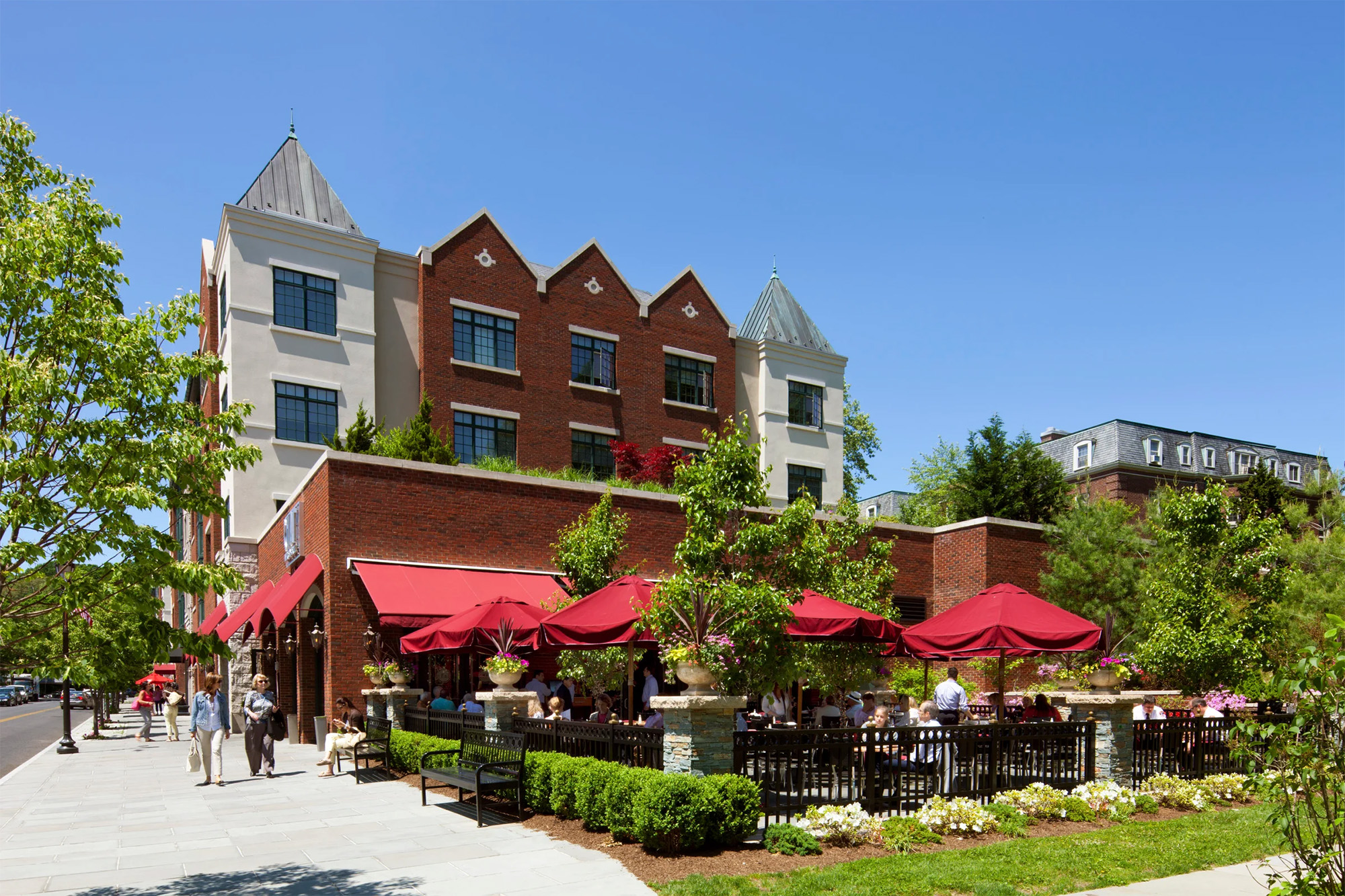
The nation’s 65-and-over population is expected to reach nearly 84 million by 2050, according to the U.S. Census Bureau, and multiple studies indicate that most of these people want to stay put. “Ultimately, we are competing with ‘home,’ Royal Oaks Chief Operating Officer Gretchen Cobb, a think tank participant, said during the LeadingAge conference.
For the past decade, Perkins Eastman has been at the forefront of defining the “value proposition” that would give seniors a reason to move. To accomplish that goal, the firm’s senior living and residential practices have worked as a team to help developers and senior-housing operators redefine what the Golden Years can look like, where “aging in place” is no different—if not better—than the home where you’ve always lived.
Senior Living Studio
Working under the Living Studio umbrella, the team advises traditional multifamily developers that want to get into the 55-plus active adult market, whose residents don’t desire any healthcare services. They also consult senior living clients who want to attract that younger demographic.
Today’s seniors may still work some of the time, and they are more physically active and socially engaged than their predecessors, says Seattle Managing Principal Wolf Saar, who gave a 2021 presentation to LeadingAge titled Not Your Parents’ Senior Living. Their home environment should reflect those qualities. “This is really starting from the premise of a more contemporary multifamily residential project,” he explains. “We talk about how those features are manifesting themselves in senior living projects.”
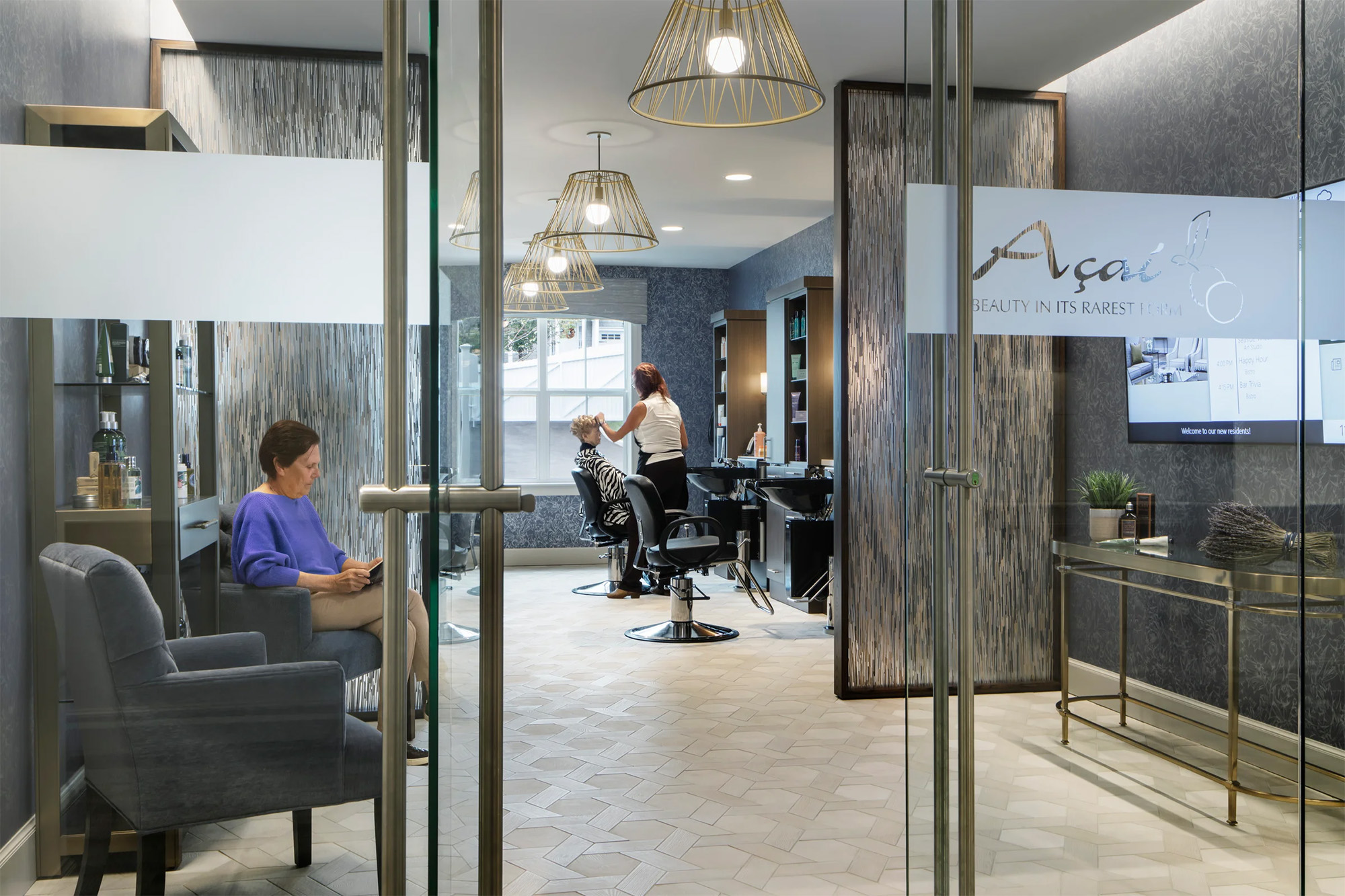
The dining options, for example, will resemble a restaurant rather than a cafeteria; the gym is geared toward fitness, health, and wellness rather than rehab; space is often provided for co-working; and workspaces are included within the living units. The salon channels a chic city locale rather than a space you’d wheel your mother into, says Daena Tamborini Padilla, a principal in the senior living practice. “Residents are becoming more discerning,” she says. “To expand the market, providers are looking at market-rate competitors to lure them in.”
The resulting projects might look no different from a mixed-use development, but they seamlessly integrate age-friendly details, explains Alejandro Giraldo, the firm’s senior living practice leader. The subtle details might include wider doorways, slightly brighter light levels, or color contrasts for better visibility. “How is your community allowing your residents to age in place for as long as possible? That’s when we come in,” Giraldo says. “Over 40 years of designing for seniors, we’ve learned how to work in the many details that allow aging adults to continue to live independently and safely far longer than they could in their previous homes,” Perkins adds.
Moving on Up
Perkins Eastman is designing a new 35-story tower in Houston as part of a large addition and expansion to the existing continuing-care campus for Uptown Oaks at the Hallmark.
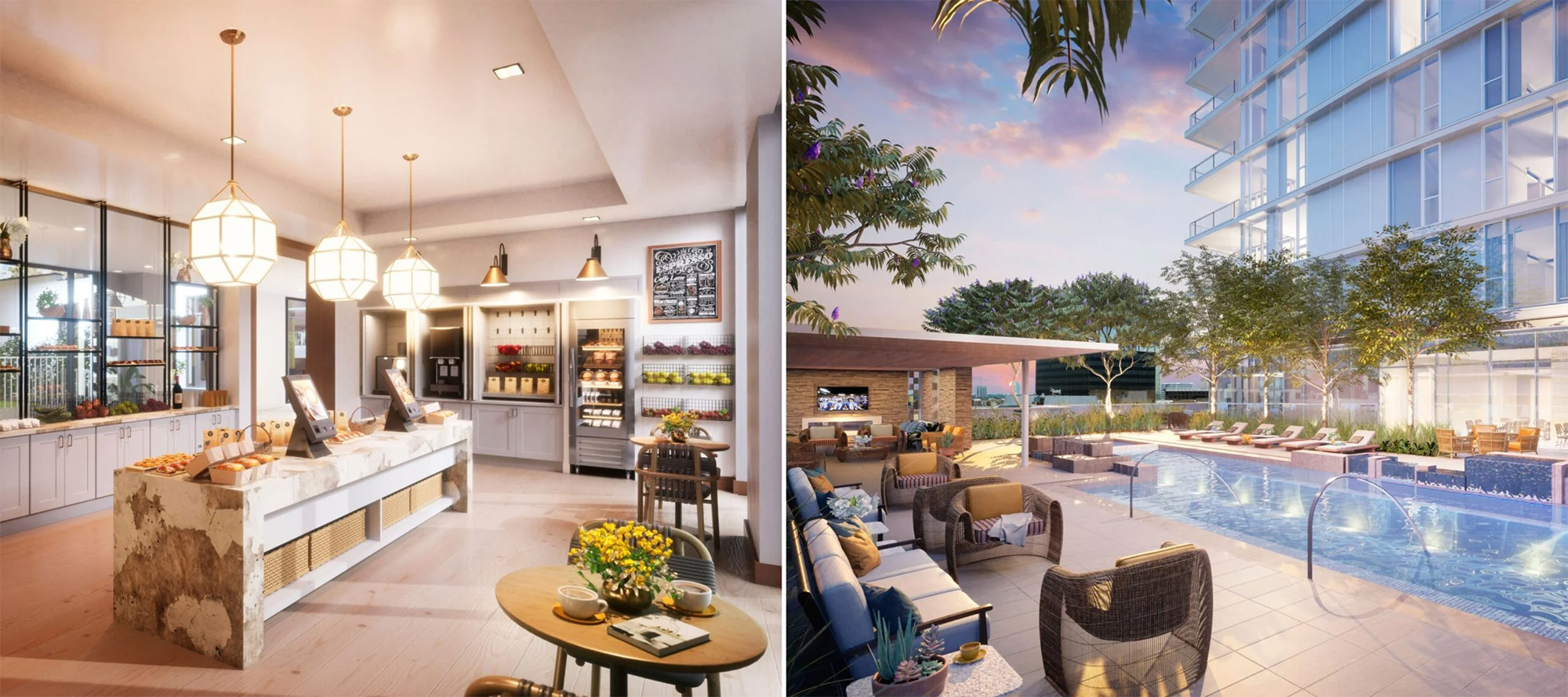
The client wanted this tower, which will house 113 independent-living apartments, to be a positive addition to Houston’s high-rise skyline, Associate Principal Jeremy Whitener told Environments for Aging, which profiled the project this spring when it won a merit award in the magazine’s annual design showcase: “One of our mandates from the client was to create a building that looked contemporary and fit in with the surrounding skyline. The client desired a product in the market that was indistinguishable from other high-end residential towers in the area.”
The design also focuses on hospitality-forward amenities, such as multiple dining venues, a putting green, expansive pool deck, and outdoor courtyards within a rich landscape that preserves many of the site’s mature oak trees.
The property, furthermore, is located less than a mile from a restaurant-and-retail hub of the city. Its positioning is in line with what many senior living developers are going after, Whitener explains. These communities are “very intent on finding space near existing amenities, well in the mix of society. They’re trying to find areas next to a small town center, for example, that’s near complimentary amenity space that already exists.”
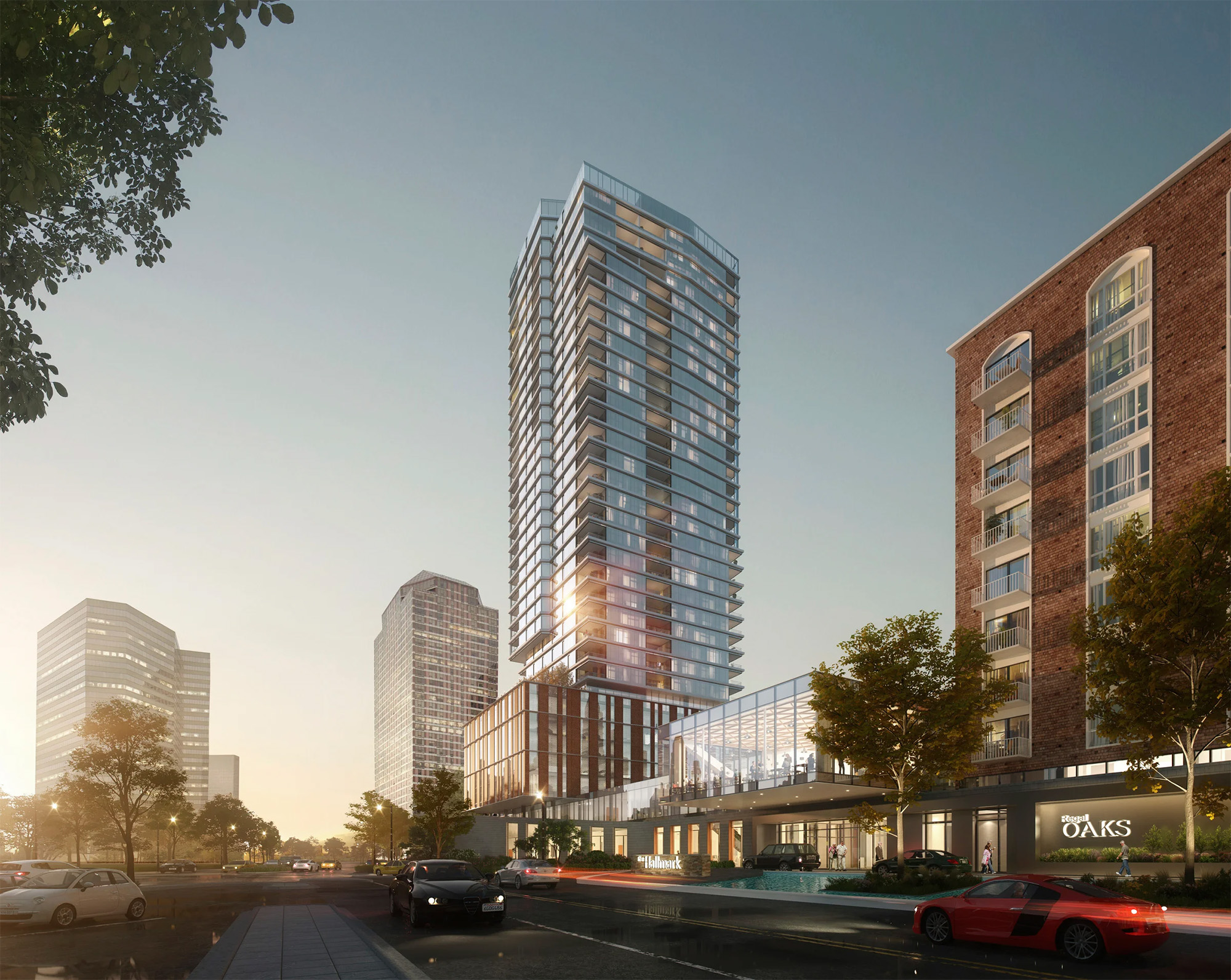
The Living Studio is also designing The Trillium of Tysons in Northern Virginia just outside Washington, D.C., a 15-story building that’s connected to street-level retail and a large park at the center of the bustling, mixed-use Boro district adjacent to the area’s luxury mall. It will offer a salon and spa, juice bar, a rooftop garden, and concierge and luxury-car services. Its developer, Silverstone Senior Living, had traditionally focused on assisted living and memory care communities.
But Trillium, along with The Landing in Alexandria, Va., which Perkins Eastman also designed, represents a shift, Steiner says. “They started to understand that the market is really about independent living, not about assisted or memory care.”
Silverstone is emblematic of senior living developers “wanting to deliver a more multifamily or hospitality-inspired project,” Residential Practice Leader Brett Swiatocha says, while at the same time, “we’re now seeing our historically multifamily clients and potential clients moving into senior living.”
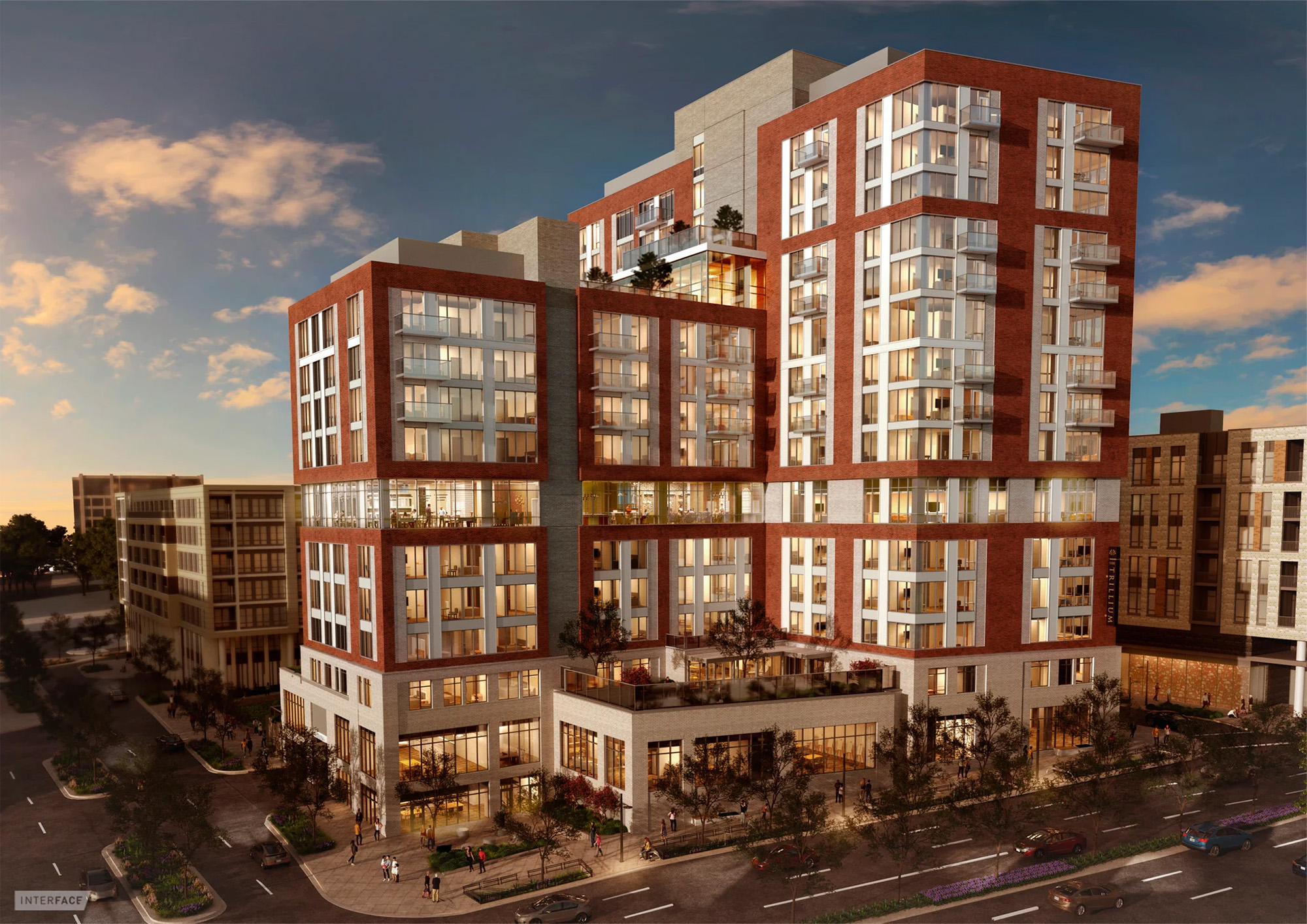
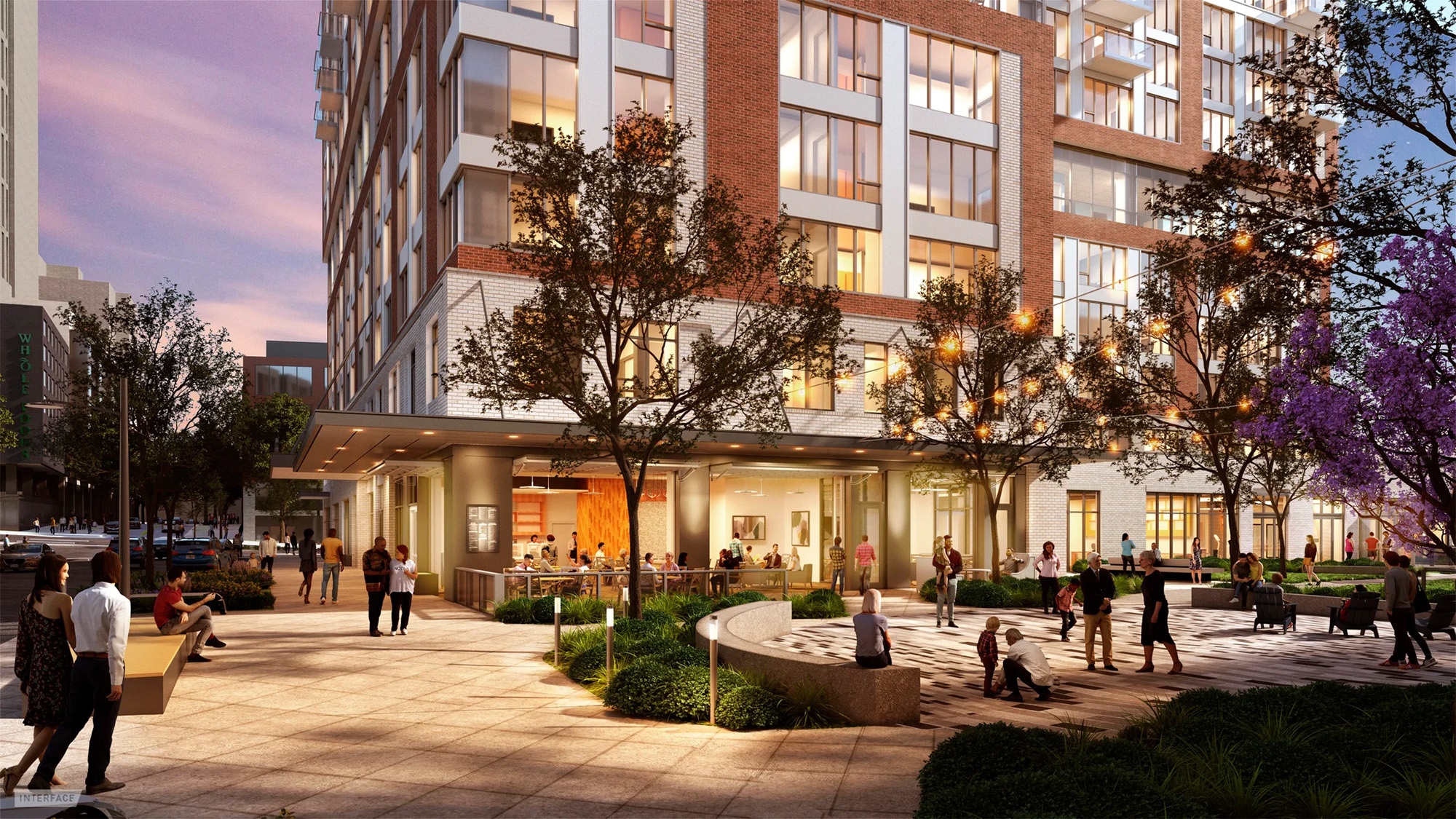
Community Focus
The developer Trammel Crow approached Perkins Eastman Principal Matthew Bell in 2017 about a land parcel it owned in the Palisades, an affluent section of Washington, D.C. The neighbors had objected to ideas for a multifamily or medical-office building development that might increase traffic and clog its narrow roads, so Bell introduced them to Steiner and the Living Studio team to pursue a senior living development; The Fitzgerald of Palisades is set to open later this year, and Trammel Crow has since commissioned the firm to design a similar project called 765 John Carlyle in Alexandria, Va.
These communities are most often rental-based, with the monthly fees supporting robust social programming such as regular cocktail hours, specialty chef demonstrations, cultural outings, and wellness activities, says Perkins Eastman Associate Principal Hillary DeGroff, a senior living leader who’s working with the residential teams to attract new developers into the active adult and independent living space.
“Having both senior living and residential within our repertoire, as well as hospitality, it’s given developers comfort in knowing that we have that breadth of expertise,” she says.
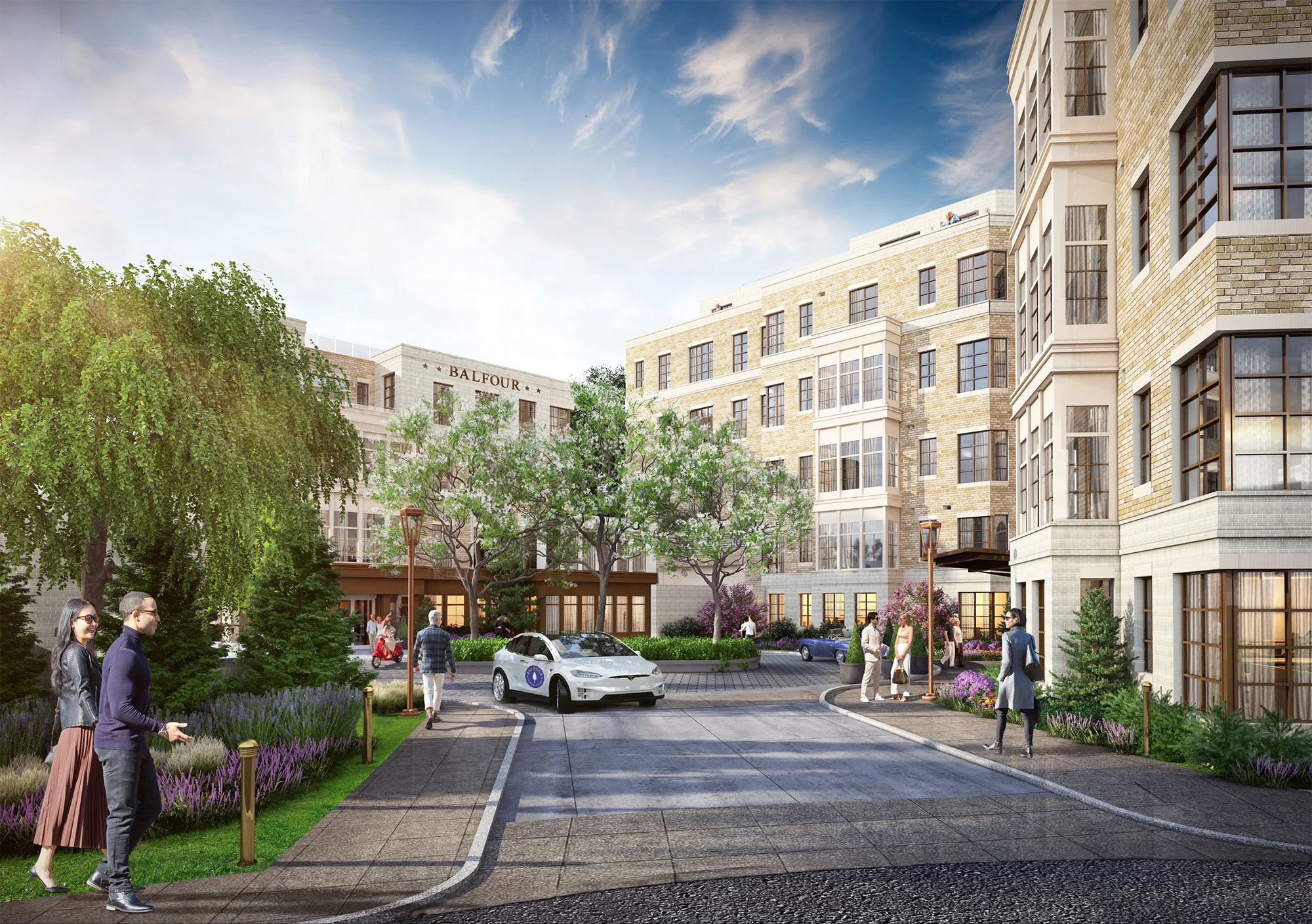
For many individuals within this demographic who are experiencing divorce or widowhood, the community element of active adult or independent living is as equally appealing as the amenities and location, Giraldo says. “These residents often consider their next life steps, looking for an environment where they can connect with peers, share common experiences, and potentially meet a new companion,” he explains. “It’s this blend of social opportunities and lifestyle that draws them to these communities.”
Ahead of the Trend
Though developers are now catching on to the notion that older consumers are more focused on lifestyle than healthcare, Perkins Eastman was onto it more than 15 years ago, with developments such as Christie Place, located in the village center of Scarsdale, N.Y., completed in 2005.
Moorings Park in Naples, Fla., completed in 2016, features one of the first widely recognized Centers for Healthy Living—an all-in-one fitness, health, and wellness facility. The Summit at Rockwood, which opened the same year in Spokane, Wash., features a similar LiveWell program, offering spaces and amenities for a holistic approach to body-and-mind wellness.
“The senior living group is always a decade ahead of whatever the trend is,” Principal Leslie Moldow says. She and Cinelli worked on the award-winning Atria Senior Living in Foster City, CA, which was completed in 2017. Its residents live in the heart of the city, next to city hall, where they can walk to the waterfront park, the local library, and a community center. It also offers a public dining venue on its ground floor.
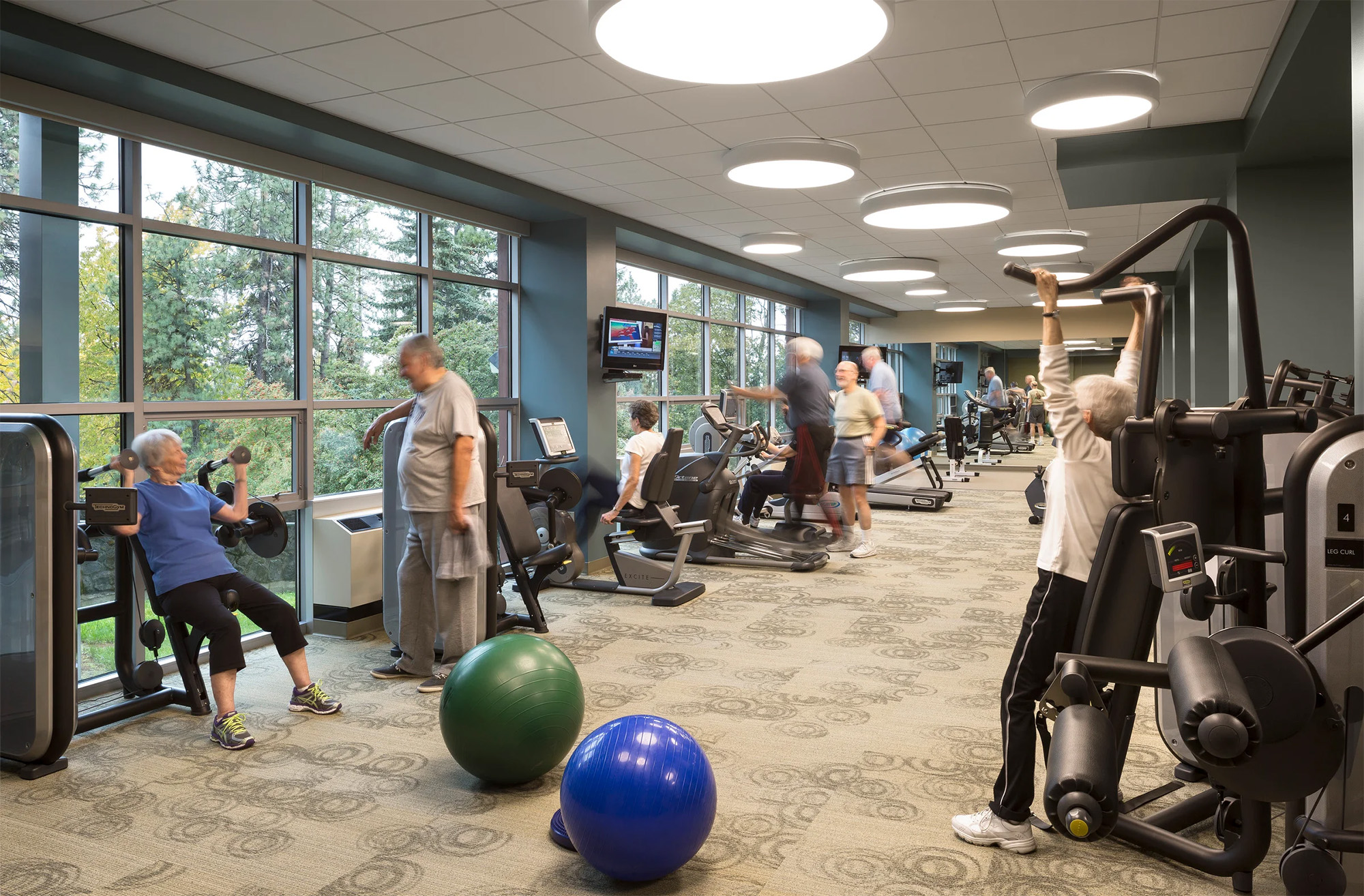
Recently, new teams of residential architects have joined Perkins Eastman’s Dallas and D.C. studios. DeGroff and Cinelli have been meeting with them to stress how they can leverage their talent with up-to-the-moment multifamily design to partner with developers interested in active adult and independent living projects. And the former BLT Architects in Philadelphia have a well-established residential portfolio all over the city and region; now that they’ve merged with Perkins Eastman, they’re talking to longtime clients about expanding into senior living.
“As we start to present ourselves as a Living Studio, it gives us a competitive advantage to deliver on multifamily amenities within a senior living community. It also provides our existing residential clients access to new opportunities and expertise as they potentially expand their portfolios into senior living,” says Associate Principal David Smallets.
Cinelli is excited about all these prospects. “If you merge the coolness factor of residential design and then take our interest in knowing how people age, we’ve got a winning brand.”

More from Author
Perkins Eastman | Jul 23, 2024
The growing importance of cultural representation in senior living communities
Perkins Eastman architect Mwanzaa Brown reflects on the ties between architecture, interior design, and the history and heritage of a senior living community’s population.
Perkins Eastman | Oct 20, 2023
Cracking the code of affordable housing
Perkins Eastman's affordable housing projects show how designers can help to advance the conversation of affordable housing.
Perkins Eastman | Sep 25, 2023
3 affordable housing projects that serve as social catalysts
Trish Donnally, Associate Principal, Perkins Eastman, shares insights from three transformative affordable housing projects.
Perkins Eastman | Jun 28, 2023
When office-to-residential conversion works
The cost and design challenges involved with office-to-residential conversions can be daunting; designers need to devise creative uses to fully utilize the space.
Perkins Eastman | May 25, 2023
From net zero to net positive in K-12 schools
Perkins Eastman’s pursuit of healthy, net positive schools goes beyond environmental health; it targets all who work, teach, and learn inside them.
Perkins Eastman | Apr 27, 2023
Blind Ambition: Insights from a blind architect on universal design
Blind architect Chris Downey shares his message to designers that universal design goes much further than simply meeting a code to make everything accessible.
Perkins Eastman | Jan 27, 2023
Enhancing our M.O.O.D. through augmented reality therapy rooms
Perkins Eastman’s M.O.O.D. Space aims to make mental healthcare more accessible—and mental health more achievable.
Perkins Eastman | Sep 21, 2022
Architecture that invites everyone to dance
If “diversity” is being invited to the party in education facilities, “inclusivity” is being asked to dance, writes Emily Pierson-Brown, People Culture Manager with Perkins Eastman.
Perkins Eastman | Aug 29, 2022
What does school safety mean?
The familiar headlines followed close after nineteen children and two teachers died in a mass shooting at Robb Elementary School in Uvalde, TX, on May 24, many of them blaming school infrastructure for the gunman’s ability to attack.











